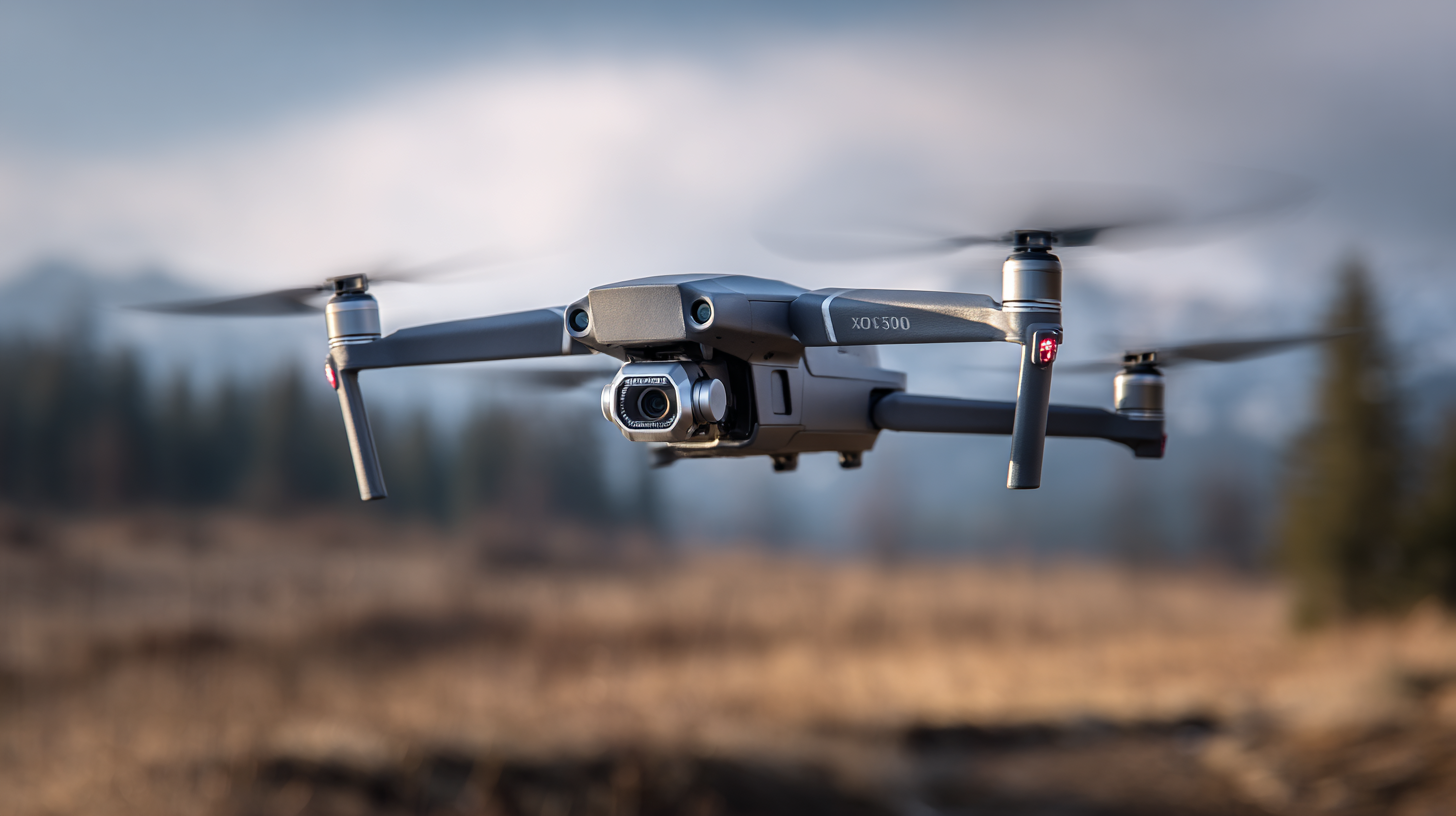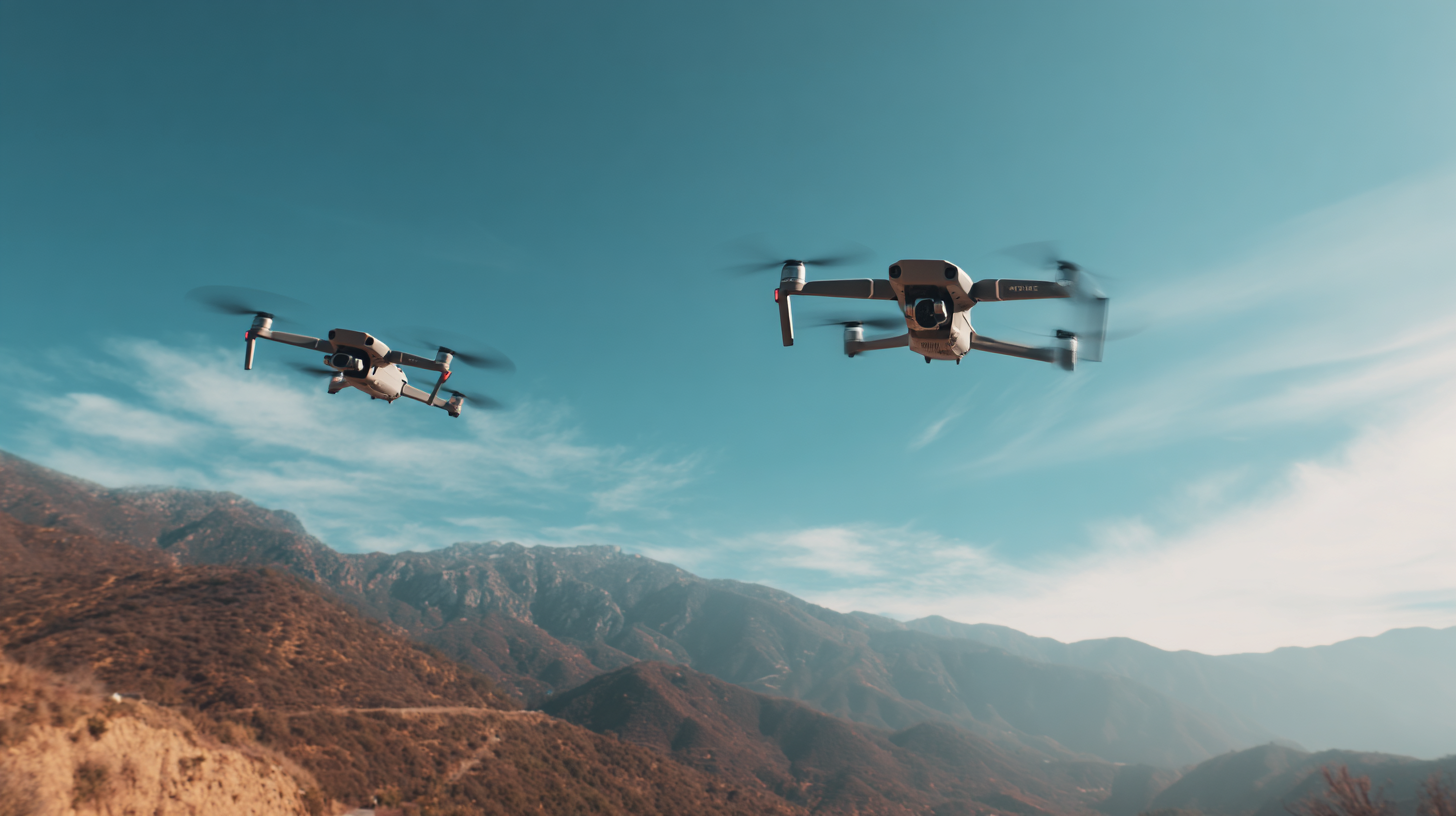Unlocking Innovation: The Benefits of the Best DJI UAV for Your Business Operations
In today’s fast-paced business environment, innovation is a critical driver of success. The integration of advanced technologies into operational workflows can significantly enhance efficiency, reduce costs, and offer a competitive edge. Among these technologies, the DJI UAV (Unmanned Aerial Vehicle) stands out as a transformative tool for various industries. From agriculture to construction, this versatile aerial device unlocks a multitude of opportunities for businesses looking to optimize their operations.
In this blog, we will explore the numerous benefits of utilizing DJI UAVs, delving into their capabilities, applications, and the potential impact on your organization. Whether you are considering implementing drone technology or seeking to refine your existing operations, understanding how DJI UAVs can revolutionize your approach is essential.
Join us as we unlock the innovative possibilities that await your business with these cutting-edge aerial solutions.
The Transformative Impact of DJI UAVs on Business Efficiency and Cost Reduction
The advent of DJI UAVs has revolutionized various business sectors by enhancing efficiency and driving down operational costs. These high-tech drones come equipped with advanced features such as high-resolution imaging and real-time data collection, enabling businesses to streamline processes that previously required considerable manpower and time. For instance, in construction, drone surveys can quickly map out large areas, significantly reducing the hours spent on site and allowing for more accurate project assessments.
Moreover, DJI UAVs can significantly contribute to better decision-making through the use of data analytics. The ability to capture aerial footage and detailed inspections allows businesses to identify potential problems early, minimizing costly delays. Industries like agriculture have also benefited immensely; farmers can monitor crop health and optimize resource allocation with precision, leading to increased yields and reduced waste. By integrating DJI UAVs into their operations, companies can achieve not only operational efficiency but also a substantial reduction in overall costs, paving the way for a more sustainable future.
Unlocking Innovation: The Impact of UAVs on Business Efficiency
Real-World Applications: How DJI UAVs Are Revolutionizing Agriculture and Crop Monitoring
DJI UAVs are transforming the agricultural landscape by enabling precision farming and enhancing crop monitoring techniques. According to a report from MarketsandMarkets, the global agricultural drone market is projected to grow from USD 1.2 billion in 2022 to USD 5.3 billion by 2027, reflecting a compound annual growth rate (CAGR) of 34.4%. This rapid expansion is largely driven by the adoption of UAV technology in monitoring crop health, optimizing resource usage, and improving overall yield. Farmers can now utilize DJI drones to capture high-resolution aerial imagery and collect data regarding soil conditions and plant health, which allows for timely interventions and informed decision-making.

Furthermore, DJI’s UAVs facilitate the implementation of advanced analytics tools that utilize machine learning algorithms to interpret the data collected. A study by the American Society of Agricultural and Biological Engineers states that using drones for agriculture can increase crop yields by up to 20%. This capability not only promotes sustainable farming practices but also reduces costs associated with fertilizer and water application, making operations more efficient. As more agricultural businesses integrate DJI UAVs into their workflows, the impact on productivity and sustainability will continue to be profound, signaling a new era in farming innovation.
Enhancing Safety and Compliance: UAVs in Construction Site Inspections and Risk Management
The application of UAVs (Unmanned Aerial Vehicles) in construction site inspections has become increasingly vital, particularly for enhancing safety and compliance. According to a recent report, the global drone market in construction is expected to reach $11 billion by 2026, highlighting the sector's rapid digital transformation. UAVs provide real-time data and insights, enabling project managers to identify safety hazards before they become critical. By employing drones, companies can conduct thorough site inspections with unparalleled efficiency, decreasing the likelihood of accidents and improving overall safety compliance.

Furthermore, implementing UAV technology aligns with sustainable construction practices. A study using PLS-SEM found that barriers to drone adoption in this domain include regulatory concerns, high initial costs, and lack of skilled personnel. However, overcoming these obstacles is crucial as drones can facilitate predictive analysis and more effective risk management. By analyzing site conditions from above, UAVs help identify potential risks early, allowing for proactive measures that not only enhance worker safety but also promote efficient resource utilization, contributing toward sustainable development goals in the construction industry.
Boosting Data Collection: Utilizing DJI Drones for Precision Mapping in Environmental Studies
In the realm of environmental studies, precision mapping has become increasingly vital. Utilizing DJI drones for this purpose offers numerous advantages, such as high-resolution aerial imagery and advanced data collection capabilities. Drones equipped with state-of-the-art sensors can capture detailed topographical information, enabling researchers to identify ecological patterns and monitor changes in the landscape with unparalleled accuracy. This technology facilitates comprehensive assessments of habitats, vegetation health, and land use changes, making it an indispensable tool for environmental scientists.
Moreover, the efficiency of DJI UAVs significantly enhances data collection processes. Traditional mapping methods often require extensive ground surveys, which can be time-consuming and labor-intensive. In contrast, drones can cover vast areas in a fraction of the time, providing rapid results without compromising on quality. This speed not only accelerates project timelines but also allows for timely interventions in conservation efforts. As organizations increasingly recognize the benefits of integrating technology into environmental studies, DJI drones stand out as a game-changing resource, revolutionizing the way data is collected and analyzed.
Unlocking Innovation: The Benefits of the Best DJI UAV for Your Business Operations
| Parameter |
Value |
Unit |
| Flight Time |
30 |
minutes |
| Max Range |
8 |
km |
| Camera Resolution |
20 |
MP |
| GPS Accuracy |
± 1 |
m |
| Weight |
1.5 |
kg |
| Battery Capacity |
6000 |
mAh |
Exploring Innovative Use Cases: The Role of DJI UAVs in Emergency Response and Disaster Management
In recent years, the implementation of DJI UAVs (Unmanned Aerial Vehicles) in emergency response and disaster management has significantly transformed the approach to managing crises. According to a report by MarketsandMarkets, the global UAV market for emergency services is projected to grow from $1.4 billion in 2021 to $4.9 billion by 2026, highlighting the increasing reliance on drone technology in critical situations. UAVs provide rapid aerial surveillance, allowing first responders to assess damage and coordinate relief efforts more effectively during disasters.
One notable use case is in search and rescue operations, where rapid deployment can be crucial. For example, the New York Fire Department successfully utilized drones equipped with thermal imaging technology during search missions, significantly reducing the time taken to locate victims. Moreover, UAVs have been employed for real-time monitoring of wildfires, offering vital information to firefighting teams, which can lead to a more strategic response and ultimately save lives. As the technology continues to evolve, the role of DJI UAVs in emergency management will undoubtedly become more integral, showcasing the potential benefits of integrating drones into existing operational frameworks.